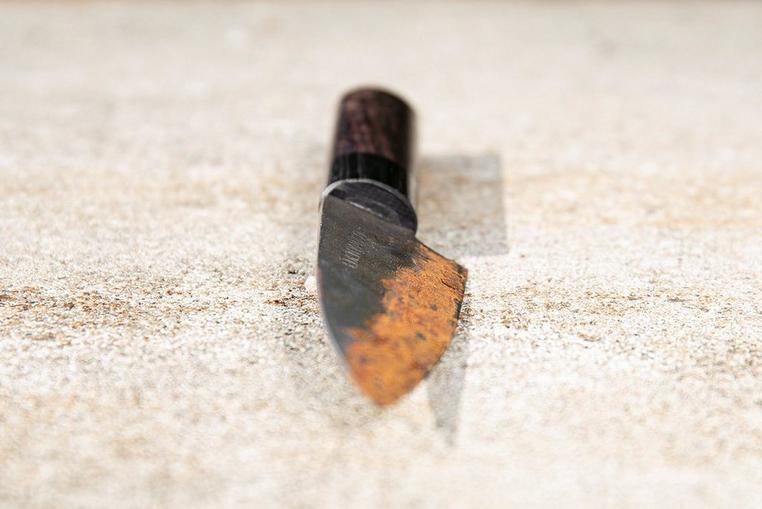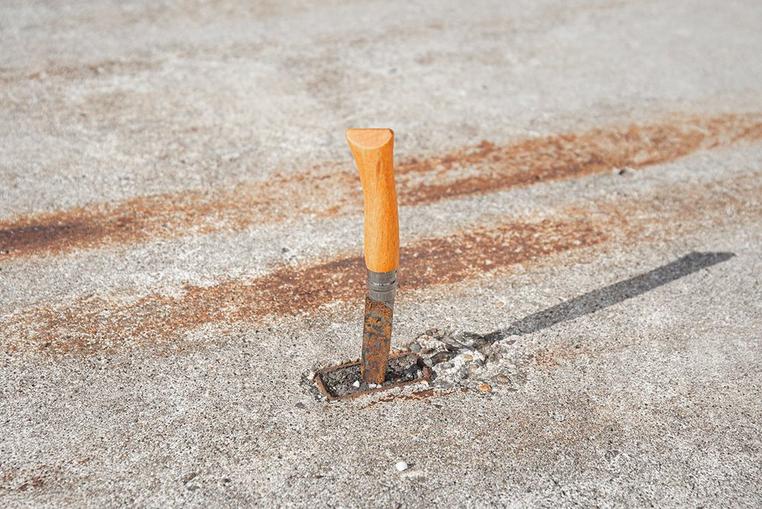Why can stainless steel still rust?
Stainless steel: it doesn't rust. Right? This couldn't be further from the truth. Almost all stainless types of steel can start to rust under certain circumstances. It sounds contradictory and is often seen as a defect or material flaw, whereas this is only rarely the case. That is why we would love to explain why stainless steel can rust and how you can prevent and clean it.
There are two ways to explain this: the long way and the short way. We will start with the short way and if you find it interesting enough you can read more below to learn about the long way.
In short:
Stainless steel is an alloy of different elements that can make a knife really sharp, but also keep it sharp. These elements ensure that the steel is strong but not completely stainless. The better the knife can retain its sharpness, the more sensitive it will be to rust. This leaves you with something to think about, but one way or the other you need to compromise. Generally speaking stainless types of steel remain stainless with proper maintenance. Sea air, salt water and acids, however, can still throw a spanner in the works. With every type of steel. Regardless of the price of the blade. As such you should always be careful when you are near the ocean or using salt in your kitchen! The most important thing to remember is that you need to keep the blade dry and clean. Any rust can easily be removed by using your favourite sharpening method.
The 'long way'
That was the short explanation of a complex case. There are, however, more sides to this story, and many more nuances to be made. We also have tips to prevent rust, even on stainless knives. There are types of steel that are completely stainless, and still stay sharp. Ready for the long explanation? Here we go!
How is a type of knife steel constructed?
To understand why different types of steel have different features it is important to know how a type of steel is constructed. Steel is namely not only made from iron. For the most part, yes, but only iron will not last as a knife. That is why different components are added per type of steel. Carbon, chromium, nickel, molybdenum, silicon, tungsten, cobalt, manganese and many other options. By playing with the percentages of these components steel manufacturers produce their different alloys. Some alloys are very tough, others very hard. Some alloys already start to rust when you look at them, other can be put on the bottom of the ocean without anything happening.
It all revolves around carbon.
Knife steel contains carbon. It is the component that ensures that you can sharpen your knife razor-sharp, and it also ensures that the knife retains this sharpness. That is why many knife brands have been using terms such as 'high carbon steel' for years. For many a quality feature. And in some way this is true. Many lower alloys namely contain less carbon which means that the type of steel does not retain its sharpness as well.
As such the more carbon in a type of steel the better. Unfortunately carbon also has another feature: it makes the steel rust. So a lot of carbon is great to retain sharpness, but at the same time it also increases the risk of rust or discolouration.
In types of knife steel you often find carbon contents of 0.5% to 1.5%. There are also peaks to 3%, or the other way to 0.15%, but those are really special types of steel
Application of alloy elements and chromium as the star
That is exactly why steel manufacturers play with the proportions between the alloy elements. Especially chromium is key here. By adding a large amount of chromium to the large amount of carbon, the steel becomes stainless. About 13% chromium is used to determine if a type of steel is stainless. More than 13% means that it is stainless steel, less than 13 means it is carbon steel. There is a subcategory: tool steel. In terms of percentage this type of steel comes close to the 13% making it a kind of doubtful case.
As a result you might say: add as much chromium as the average American car contains and you are left with the perfect type of steel! In reality, however, it isn't this easy. A lot of chromium will namely affect the sharpness retention and hardness. To counteract this, a lot of other alloy elements are added to the steel. Vanadium, for instance.
Böhler M390 is a type of steel that explores the limits of what is possible in this respect. It is an incredibly popular type of steel because it retains its sharpness for a long time and is also stainless. With 1.9% carbon this is a type of steel with a massive carbon content. It, however, also contains 20% chromium. Also quite a lot. As such you might not expect it to retain its sharpness for a long time. To compensate this type of steel contains 1.0% molybdenum, 0.6% tungsten and 4.0% vanadium. These elements ensure that the edge is rock-solid.
Does M390 have any disadvantages? We wouldn't call them that, but there are things you need to take into account. M390, for instance, is too hard to be tough. As such it is not suited to be used on large knives. In addition, if you don't have the right equipment M390 could be a little more difficult to sharpen. It is the result of all these alloy elements: they make sharpening a lot more difficult.
Why stainless steel rusts
There are a couple of external factor that cause rust: moisture, acid and salt. This is reinforced by heat. 'But I am not storing my knife in a jar of salt which means it can't rust?' Yes it still can. After all, you can come across salt in many more places. Think of sweat on your fingers, in certain foods and sea air.
Sea air is the main cause of rust when it comes to stainless steel. The air contains a combination of moisture and salt: quite disastrous for knife steel. We read it on knife forums all over the world: collectors who live close to the coast sometimes deal with rust, even with extra maintenance.
Fruit acids are another catalyst. If, for instance, you peel an apple and forget to wipe off the blade. Yes, the first couple of times this won't be an issue. However, at one point you shouldn't be surprised to find rust. VG10 steel is stainless and is used for pocket and kitchen knives. Stainless, as long as you know how to handle it. Accidentally put it in your dishwasher and you can definitely find some corrosion on the blade. It is the result of the combination of temperature, salt from the detergent, water (of course) and the aluminium in the dishwasher. You only have to place a steak knife with aluminium rivets in the handle next to your kitchen knife in the dishwasher and you create a situation where rust can do whatever it want. It has nothing to do with the quality or heat treatment of the steel: it can happen, it's a part of it and can be avoided or solved.
How do you prevent rust on stainless steel?
Clean the blade and add oil. It doesn't get any more complicated than that. If possible quickly clean and dry the knife after use. If possible also add a drop of oil. You could use the Ballistol maintenance oil, but even sunflower oil or something similar will do the trick. Anything to make sure you don't have to deal with rust.
How do you remove rust?
You can remove light rust in different ways. Depending on the nature of the rust and how deep it has penetrated the steel you can start by properly cleaning the blade under a hot tap. You could use a sponge, but need to be careful with the coarse edge to prevent scratches.
Is this not enough? You can also try Flitz. This is a light polish. With a cloth and a little bit of Flitz you can often easily remove rust. You do, however, need to keep in mind that when you are cleaning a satinized knife you need to follow the lines of the blade.
With all these anti-corrosion polishes it is important to realize that you always run the risk of changing the finish of your blade. So with a satinized blade you can polish the blade too much, or even create a dull spot. That is why you should always prevent it, instead of having to fix it.
Conclusion
There are enough reasons why even the best types of steel can start to rust. From the salty sea air to the salt in your food. In some situations your blade will be affected by rust a lot faster than in other situations. This also means that you simply need to take proper care of your tools. If you do this you don't have a lot to worry about. Did you find some rust? If so polish or sharpen the knife in time.


?%24center=center&%24poi=poi&%24product-image%24=&fmt=auto&poi=%7B%24this.metadata.pointOfInterest.x%7D%2C%7B%24this.metadata.pointOfInterest.y%7D%2C%7B%24this.metadata.pointOfInterest.w%7D%2C%7B%24this.metadata.pointOfInterest.h%7D&scaleFit=%7B%28%24this.metadata.pointOfInterest%29%3F%24poi%3A%24center%7D&sm=c&w=762)









